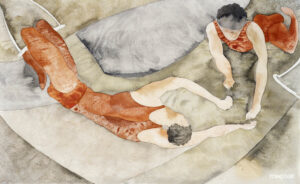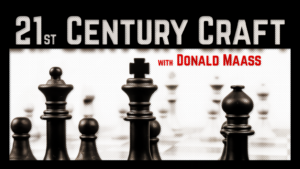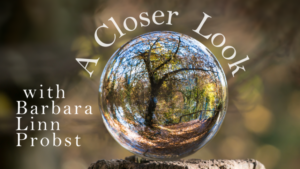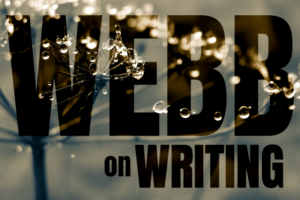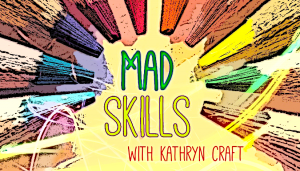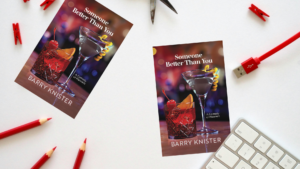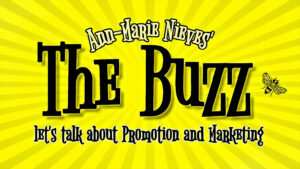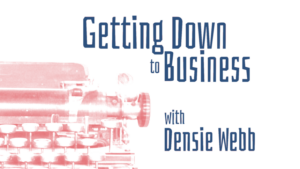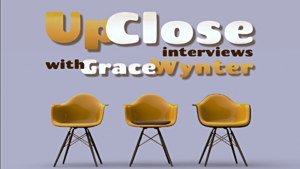REAL WORLD
While I have earned nothing beyond a BA in English, I’ve never let that stop me from pretending I have a vast array of training and advanced degrees at my fingertips. Need a marriage therapist who’s willing to work for free? I’m your gal. Looking for a pro bono private investigator? You’ve come to the right place! Hoping to stumble upon a psychiatrist who specializes in diagnosing those who don’t know they need a diagnosis? Yep, I can do that too.
On December 24th, I found myself at Safeway, picking up the items I had forgotten to purchase on the grocery runs I had made on the 22nd and 23rd. Safeway is my go-to because I grew up shopping at Safeway. And I am a cheapskate. It’s also a little gritty, which I appreciate, because at the chichi grocery store that’s a little closer to my house, the apples are too beautiful, the specialty items too special, the shoppers too coiffed. At Safeway? I feel perfectly at home log-rolling myself from bed to car to Safeway. No coiffing required.
It was in the produce section that I found myself picking green beans from a heap and standing about fifteen feet from a couple near the potatoes. I noticed them because they appeared both too coiffed to be shopping at Safeway and too calm to be shopping on Christmas Eve. But there was something else about them that piqued my interest.
Summoning everything I learned while earning my pretend PhD in Psychology, I began my initial assessment of the couple. I guessed they were in their early 40s. She had a sassy blonde bob and wore denim trousers and a Santa hat. He was well-dressed and conventionally handsome; if you Google “generic handsome man,” you will see many iterations of him. They each wore a ring on their wedding finger. Mr. Handsome was pushing the cart.
They looked nice enough, but something was vaguely rotten in this aisle of Safeway.
Knowing I needed to move physically closer to the couple, I called on the acting skills I had learned during my pretend years at Julliard. Pretending to be checking my grocery list, then pretending I had ALMOST forgotten the onions, I pushed my cart over to the onion section. Sometimes you pretend you need a Walla Walla sweet, even if you already have onions at home, so you can eavesdrop on a couple in the nearby potato section.
And eavesdrop I did! I listened as the couple spoke of their butter lettuce options as if butter lettuce could make or break Christmas. They discussed the gift card they had purchased for his parents (at the fancy Italian restaurant down the street) and the gift card they would buy for her parents (at the fancy bakery up the street). They discussed stocking stuffers for their kids, the wrapping of gifts they needed to do that evening, the bourbon they wanted to get at the fancy liquor store. All this, while I committed, acting-wise, to finding the most perfect onion I didn’t even need.
It wasn’t the content of their conversation that felt off; it was their tentative, cautious tone and […]
Read MoreWriter Unboxed will be on its annual holiday break for the next week. We hope that you and yours enjoy the season, and that you’ll join us again in the new year. We’ll return on January 1st, 2025, with a post from Donald Maass.
Until then, write on!
Read MoreWe’re in the thick of the holiday season from the religious to the nature-centric to the end-of-year celebrations, and I find myself ruminating on this cluster of holidays most of us celebrate in some form or another. How these holidays shape our habits, our mood, our intentions, our motivations. As I sip my cappuccino, I’m asking myself: do we really change who we are this time of year, put ourselves on pause and aim to be better human beings? And how do we each choose to adhere to our belief systems? Are we steadfast and loyal, or more of a cherry-picker whose beliefs have eroded over time and experience and distance from their origins? What is the nature of these beliefs, and how do they form a deep-seeded part of who we are? As you can see, my favorite way to spend the month of December is pairing my champagne and Christmas goodies with big thoughts and deep questions.
For writers, it’s an easy jump to take these deep thoughts about ourselves and apply them to our characters. Our characters are, after all, just people on the page that we’re aiming to imbue with life. So I’m considering my current main character’s belief systems, her customs and traditions, and her sense of morality, since they are a large part of what gives any character dimension and depth. I’m also thinking about pivotal experiences and how they not only underscore themes throughout the story, but they are the key to her growth. These aspects of beliefs, both learned and taught, add the kind of scope that makes our character worth reading.
Beliefs that are Taught
Read More
Six weeks ago I finished the novel I’ve been writing for the last two years. I typed the words “THE END,” sat back in my chair, and promptly burst into tears—something I’ve never done before after writing. But completing this book felt like a significant end to me, the end of a work I’d loved writing, the end of a period of my life that had included some major upheaval (I came up with the idea during the pandemic, and started writing a year after my mother died). I felt a mix of relief, joy, pride, amazement (I really wasn’t sure I’d ever write another novel), and a huge sense of loss that it was over.
Writing a novel is to immerse yourself in a world that’s with you most of your waking hours, whether you’re actively working on it or whether you’re showering, gazing out the window, dancing, or sorting your files. The characters you create can feel more real than the people in the next room, and the details of their interior and exterior lives can be all-consuming. So when that is suddenly over, when those people and places are gone, what happens next?
I’m asking myself that question a lot. I miss writing this book. I miss the characters, I miss their struggles and triumphs, I miss their world. And I miss having them to think about at three in the morning when I can’t sleep, or when I’m out hiking and it’s cold, or even when I’m in the kitchen cooking. Once when I was writing my second novel, set in the San Juan Islands off Washington state, I was so deep into my writing that when I finally finished for the day and walked into the kitchen I actually said to my husband, “Wow. It’s really nice to be back home.”
“Where else have you been?” he said.
I’m not talking about all the revision work that still lies ahead for me. This isn’t my first novel; I know I have significant work to do. And I’ll do it, just not yet. I know that for many the answer to this missing is to dive into revising or, even more, into the next work, to start creating new worlds and people. But change has always been hard for me. It’s hard to let go. So here’s what I’ve figured out about how to handle what comes after The End:
Wait. It’s a good time of year to for fallowness (it’s a word; I looked it up!) As tempting as it’s been for me to go back and edit and revise, or to start writing a sequel or something new, it’s been important for me to spend some time in my head and my life without the constant distraction provided by writing a novel. It’s allowed me to make plans and set priorities and think differently. Writing is how I figure out my self and my life; I’m a different person than I was when I started writing this book. It takes some time to absorb that.
Celebrate. I wrote a book! An entire novel, all 125,000 words of it! (I know, it’s too long). It’s a difficult, mind-bending, incredibly challenging thing to do, and I did […]
Read MoreToday’s “ad post” is also a valuable blog post written by our own Barry Knister, detailing his experience with two editors while preparing his novel, Someone Better Than You, for publication. Enjoy!
Deciding to work with an editor is a major decision. It costs money, and calls on the writer to do something analogous to what all good parents must do: love their children enough to let them go (at least until they come home and move into the basement).
That’s what the writer does when she turns over her baby to an editor. This person will get to know the fledging novel or memoir, but usually with no knowledge of how it came to be. That means, when the baby comes home, the writer must will herself into a kind of amnesia, in order to absorb and respond to the stranger’s reactions.
That’s why I urge writers to read a report, but to then put it aside for a week or more before going back to it. Otherwise, they risk acting or reacting on impulse.
Recently, I worked with two editors on my forthcoming novel, Someone Better Than You. By coincidence, both people are past editors for Penguin. In every respect, working with these editors led to improvements in my novel. I acted on most but not all of their suggestions, and what follows is my attempt to summarize the process.
RONIT WAGMAN
I first hired Ronit in 2020 to read and report on the full manuscript of what was then titled Ashley and the Jell-O Hour. Although she liked the story (“the world of the novel and the characters that dwelled in it felt deeply authentic to me”), she had several major criticisms.
AGENCY
In the version Ronit read, my main character Brady “Buzz” Ritz is a retired newspaper editor. His life is upended when he publishes a book of his anonymously published satirical columns. He blunders mightily by publishing the book’s second edition under his own name.
In this first version, Brady’s book comes about through the actions of others. The editor of Grumble (the little magazine that first published his column) talks Brady into developing a book of his work. Ritz’s best friend from his newspaper days gets an agent friend to find a publisher. Most importantly, the best friend shames Ritz into using his own name for the second edition.
As Ronit explained, I had made my main character the passive pawn of others. Someone else pushes him to develop the book, and someone else arranges for it to be published. Most importantly, someone else is responsible for Ritz publishing the second edition under his own name.
Ronit’s guidance led me to make Ritz less a passive actor, and more the responsible agent for his story. He still gets the idea for the book from his editor, but as Ronit pointed out, no agent would take on such a manuscript from an “anonymous” writer—because no publisher would be interested in such a book.
So, I replaced a commercial publisher with a university press whose editor has the freedom to publish something by an unknown writer. I also got rid of the idea of a second edition. Once I made these changes, I was free to make Brady responsible for the […]
Read MorePublishing news was on overdrive in November. AI was back in the headlines as Spines, a publishing startup, plans to disrupt the publishing industry with AI and flood the market with books in 2025. A Dutch publisher will be using AI to translate books to English, and Microsoft is dipping its toes in the publishing waters, saying it’s going to use technology to accelerate and democratize publishing in the areas of technology, science, and business. Scribd-Evernd is going the way of Kindle Unlimited, i.e. there is a subscription option. Book bans are accelerating and the push back is strengthening. That publishing would be even more affected by politics beyond book bans, is beginning to feel inevitable. Hachette raised the ire of employees by launching two imprints to be led by Thomas Spence, a visiting fellow at the Heritage Foundation, the publishers of Project 2025. Booktok, a bastion of freewheeling book talk now has red lists circulating. Despite all this, the Association of American Publishers says that publishing in the US is up 7% for the year. Read on for more publishing juice.
AI
Dutch publisher will use AI to translate books into English
HarperCollins is selling their authors’ work to AI
Is it becoming push-button publishing?
Microsoft launches its own imprint to “speed up” traditional book publishing
Audiobooks
Scribd-Everand now offers unlimited ebook subscription
Bloomsbury’s audiobook catalogue now available with Spotify Premium
Book Bans
PEN America’s new book banning report, before the election
The many branches of censorship
Everylibrary warns that the election results mean more uncertainty for the future of libraries
PEN America reports that school bans are surging
Florida schools have removed more than 700 books from school libraries
Authors Against Book Bans has formed a coalition across the US to fight book bans
Authors Guild Banned Books Club: Read a banned book each month
Book News
Things to make you feel positive about book culture in general
Book Promotion
What publishing can learn from the election
Book Stores
Barnes & Noble is still opening new stores
Diversity
Why representation in publishing matters
Literary Agencies
Georgia Bodnar has launched her own agency Noyan Literary. She was previously with UTA
Politics
McMillian Marketing VP’s election post stirs anger
Even Booktok has become politicized, creating red lists
Trump threatens New York Times, Penguin Random House over critical coverage
Hachette Book Group US expands Basic Books Group with 2 conservative imprints
Publishers
Seoul-based company develops tactile comics for the sight-impaired
Publishers Weekly salary jobs report
Brooklyn-based small publisher, Under the BQE Press, launched on September 24
Association of American Publishers says US publishing up 7% for the […]
Read MoreWhen all else fails, we write. We tell stories. Then we revise them. And then we revise them again, and again. And if you’re anything like me, again. And during all that time, the world keeps spinning, burning in some places, healing in others, hungry, even ravenous for escape, understanding, empathy. And so we write. Or we at least try to. Which brings me to this year in review summary and the encouragement I hope you’ve received from the advice shared in my Up Close column. Over the past year, I’ve had the good fortune of interviewing a number of publishing professionals. From a successful self-published author to a former acquisitions editor, and everything in between, their advice shared a common thread: keep going, keep querying, keep writing. So here’s a review of the best advice from Up Close this year.
Terra Weiss, Author of the Wingmom Series: Advice for writers considering self-publishing
Ask yourself the important questions. The first one is whether you want to make writing into a career or not. If the answer to that is yes, then the second is whether or not you want to be an entrepreneur because, as you’ve learned, successful self-publishing means running a business, not just writing books.
The third is if you are—deep down in your heart—okay with writing to market. Some people lose the joy of writing if they have to fit their books into a genre or trope. Which is fine, but it may mean you need to pursue the trad route. The fourth question is whether you can produce books on a tough schedule, around 3-5 books a year. This means you’re spending about a month on drafting, a month on editing, a month giving it to critique partners, betas, and editors, and a month on allowing advanced readers to have it and review it. Also ask yourself if you’re an “I’ll figure it out” type of person because you’ll be scrambling to learn something new every day, whether it be the latest technology, understanding the updated rules for sending newsletters, or how to reposition your books or marketing strategy to fit in the current market, which shifts almost overnight.
Finally, read books that are like yours. This one sounds simple, but so many authors aren’t reading their successful comp authors, which means they’re unaware of what the standards are in their genre. It’s impossible to do anything well if you don’t know the target you’re aiming for.
Read More
